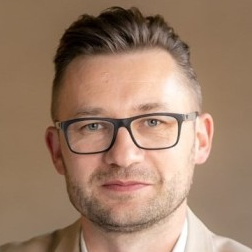Alternative Water and Energy Systems in the Buildings
A special issue of Resources (ISSN 2079-9276).
Deadline for manuscript submissions: closed (30 June 2024) | Viewed by 11596
Special Issue Editors
Interests: alternative water resources; rainwater harvesting systems; renewable energy sources; heat recovery systems; sewage systems; hydrodynamic modeling; life cycle cost analysis
Special Issues, Collections and Topics in MDPI journals
Interests: waste heat recovery systems; sewage systems; underground infrastructure; modeling of infrastructure; water management; rainwater harvesting systems; retention
Special Issues, Collections and Topics in MDPI journals
Special Issue Information
Dear Colleagues,
Water and energy are both crucial resources to maintain both the well-being of humans and the economic development of the world. Anthropogenic activities are major contributors to intensifying water scarcity and a clear increase in energy demand. An important part of this demand is the energy and water used in buildings. To increase water availability and to reduce the pressure on natural resources, alternative sources can be implemented, mainly greywater and rainwater. The use of renewable energy sources, such as heat pumps, PV panels, solar collectors and waste heat lead to a reduction in the consumption of energy produced from fossil fuels. The use of alternative water and energy technologies in buildings not only reduces the negative impact of these buildings on the environment, but is also often financially beneficial.
Dr. Agnieszka Stec
Prof. Dr. Daniel Słyś
Guest Editors
Manuscript Submission Information
Manuscripts should be submitted online at www.mdpi.com by registering and logging in to this website. Once you are registered, click here to go to the submission form. Manuscripts can be submitted until the deadline. All submissions that pass pre-check are peer-reviewed. Accepted papers will be published continuously in the journal (as soon as accepted) and will be listed together on the special issue website. Research articles, review articles as well as short communications are invited. For planned papers, a title and short abstract (about 250 words) can be sent to the Editorial Office for assessment.
Submitted manuscripts should not have been published previously, nor be under consideration for publication elsewhere (except conference proceedings papers). All manuscripts are thoroughly refereed through a single-blind peer-review process. A guide for authors and other relevant information for submission of manuscripts is available on the Instructions for Authors page. Resources is an international peer-reviewed open access monthly journal published by MDPI.
Please visit the Instructions for Authors page before submitting a manuscript. The Article Processing Charge (APC) for publication in this open access journal is 1600 CHF (Swiss Francs). Submitted papers should be well formatted and use good English. Authors may use MDPI's English editing service prior to publication or during author revisions.
Keywords
- alternative water sources
- rainwater harvesting system
- grey water reuse
- renewable energy sources
- green buildings
- drain water heat recovery
- energy efficiency
- financial efficiency
Benefits of Publishing in a Special Issue
- Ease of navigation: Grouping papers by topic helps scholars navigate broad scope journals more efficiently.
- Greater discoverability: Special Issues support the reach and impact of scientific research. Articles in Special Issues are more discoverable and cited more frequently.
- Expansion of research network: Special Issues facilitate connections among authors, fostering scientific collaborations.
- External promotion: Articles in Special Issues are often promoted through the journal's social media, increasing their visibility.
- Reprint: MDPI Books provides the opportunity to republish successful Special Issues in book format, both online and in print.
Further information on MDPI's Special Issue policies can be found here.






